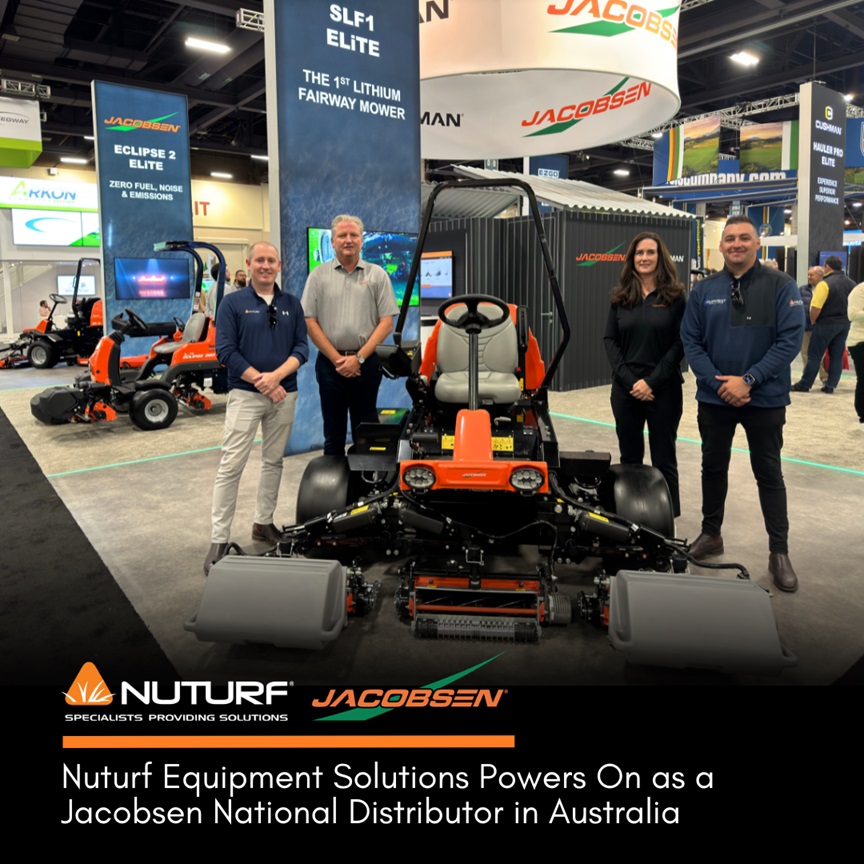Oversowing Warm Season Turf: Establishment Program Essentials
With increasing demands on both presentation and surface integrity the option of employing a two grass system on many of our sports surfaces is becoming more popular. Perennial rye grass has become the seeded grass of choice due to its rapid establishment abilities, high presentation quality, wear management assistance, and an impressive durability from late summer establishment, through winter with an ability to hold well into spring with the right care. The rapid establishment attribute has become important during sports season transition where turf managers are often given very limited time to make the necessary changes.

Pre-sow preparations
Since it is common to be sowing late summer when warm season grasses are in their peak growth it may be necessary to temporarily regulate the turf to provide an opportunity for over-seeded rye to establish. A stout rate of Trinexapac to temporarily restrain vigour can be a useful measure. It may also be helpful to lightly scarifiy the surface to provide an easier avenue for the rye seed to get to the soil surface. Some mechanical seeders will overcome this by rolling knuckles over the surface to create the depressions the rye seed places into, but optimization of the seeding exercise will require an appreciation of the physical barrier the warm season turf actually presents.
At this time of year both air temperatures and soil temperatures remain high so it is essential to include some Pythium protection through the early establishment phase. Ideally this is placed in the soil 1-2 days prior to sowing to ensure the bed to be sowed into has received a pre-treatment and has a reservoir of protection the germinating seedling can draw upon through its early development.
Late season grub protection may also be important. Late instar coleoptera grubs or the more typically lepidoptera grubs like army worm can invade through this period damaging the warm season turf and/or the germinating seedlings.
Seed selection is also important. Breeders are always improving the attributes of the varieties and whilst most perennial rye’s available today are very high quality, they do have some differing attributes such as colour, wear tolerance and preferred sowing densities for optimal surface production. Speak to your Nuturf representative or do some homework yourself prior to engaging the process as some varieties may be better suited to your needs than others.
Early post sow care
The rye can be up and going anywhere from 3-14 days after sowing. As temperatures decrease the germination period extends. High temps usually allow fast germination but a bit of nursing is needed during early establishment. Rye normally sends up a single shoot to begin with and the germination can often be spotted by the red coleoptile, then through either cutting or natural development it will tiller at the base to have multiple leaf shoots coming from the crown. This process occurs progressively and improves density and cover over time so be patient. Don’t rush to a further sow if the density appears thin – it will improve.
Nutrition through the establishment phase is important. Nitrogen is required but should be a controlled release form so as not to produce vast amounts of soft foliage that is weak and susceptible to disease. The addition of some phosphorus will usually aid establishment – even if soil tests would suggest the phosphorus level is adequate. Not all this phosphorus will be plant available, so a little bit more normally confers a benefit.
Additional protection from Pythium in the first 4 weeks is recommended. This could be through a program of foliar applied fosetyl, or root application of a product like Segway. Be mindful of the different application requirements for these though – placement is important.
Once cutting has commenced a growth regulation program can be considered. This can be as much about pursuing quality attributes than regulation by using a low dose applied often approach. Rye responds very well to a trinexapac program with significant resources pushed to the root system to aid vitality and resilience.
How Nuturf can help you
We offer a variety of seed products to suit your needs. We have various seed blends or straight varietal types to meet a range of end user preferences. The different products offer variations in final colour, vigour and ability to hold well into Spring if required.
Nutrition needs are covered by anything from slow release granular products with a variety of NPK options to foliar fertilisers for those on sand profiles.
Fungicide needs are covered with either dedicated Pythium products or broad spectrum fungicides for management of foliar and root diseases across established surfaces.
Growth regulation is covered by various trinexapac formulations to suit budgets and surfaces. Both ME and EC formulations are available.
Nuturf also has the technical expertise and vast resources around the country to assist all customers with their technical, programming or purchasing needs.
















